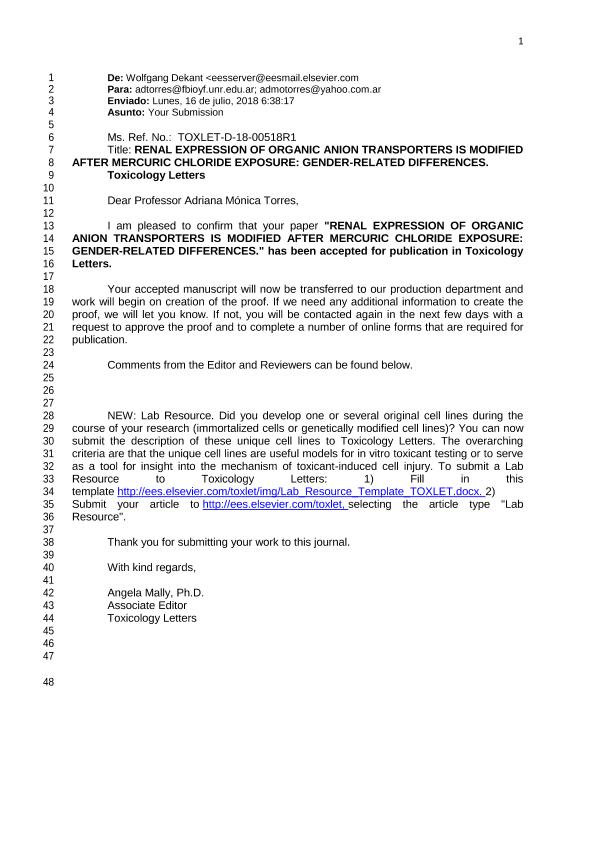Artículo
Renal expression of organic anion transporters is modified after mercuric chloride exposure: Gender-related differences
Fecha de publicación:
10/2018
Editorial:
Elsevier Ireland
Revista:
Toxicology Letters
ISSN:
0378-4274
Idioma:
Inglés
Tipo de recurso:
Artículo publicado
Clasificación temática:
Resumen
Mercuric ions (Hg+2) gain access to proximal tubule cells primarily by the Organic Anion Transporter 1 (Oat1) and 3 (Oat3) in the basolateral plasma membrane. The removal process of Hg+2 ions from cells into the lumen involves an efflux process mainly mediated by the Multidrug Resistance-Associated Protein 2 (Mrp2). The aim of this study was to compare the sex-related differences in the renal expression of Oat1, Oat3, and Mrp2 after mercuric chloride (HgCl2) treatment and analyze their relevance in the mercury-induced nephrotoxicity. Control and Hg-treated male and female Wistar rats were used. Animals received a dose of HgCl2 (4 mg/kg bw, ip) 18 h before the experiments. Tubular injury was assessed by histopathological studies. The renal expression of Oat1, Oat3, and Mrp2 was analyzed by Western Blotting. Mercury levels were determined in urine by cold vapour atomic absorption spectroscopy. HgCl2 treatment increased the expression of renal Oat1 and Mrp2 in both sexes, being more evident in females than in males. The Oat3 renal expression only increased in female rats. The higher expressions of Oat1, Oat3, and Mrp2 could explain the higher renal excretion of mercury and consequently, the lesser renal tubular damage in female rats than in male rats.
Palabras clave:
Diferencia de sexo
,
Falla renal
,
Nefrotoxicidad
,
Cloruro mercúrico
Archivos asociados
Licencia
Identificadores
Colecciones
Articulos(CCT - ROSARIO)
Articulos de CTRO.CIENTIFICO TECNOL.CONICET - ROSARIO
Articulos de CTRO.CIENTIFICO TECNOL.CONICET - ROSARIO
Citación
Hazelhoff, María H.; Bulacio, Romina Paula; Chevalier, Alberto Antonio; Torres, Adriana Monica; Renal expression of organic anion transporters is modified after mercuric chloride exposure: Gender-related differences; Elsevier Ireland; Toxicology Letters; 295; 10-2018; 390-396
Compartir
Altmétricas




